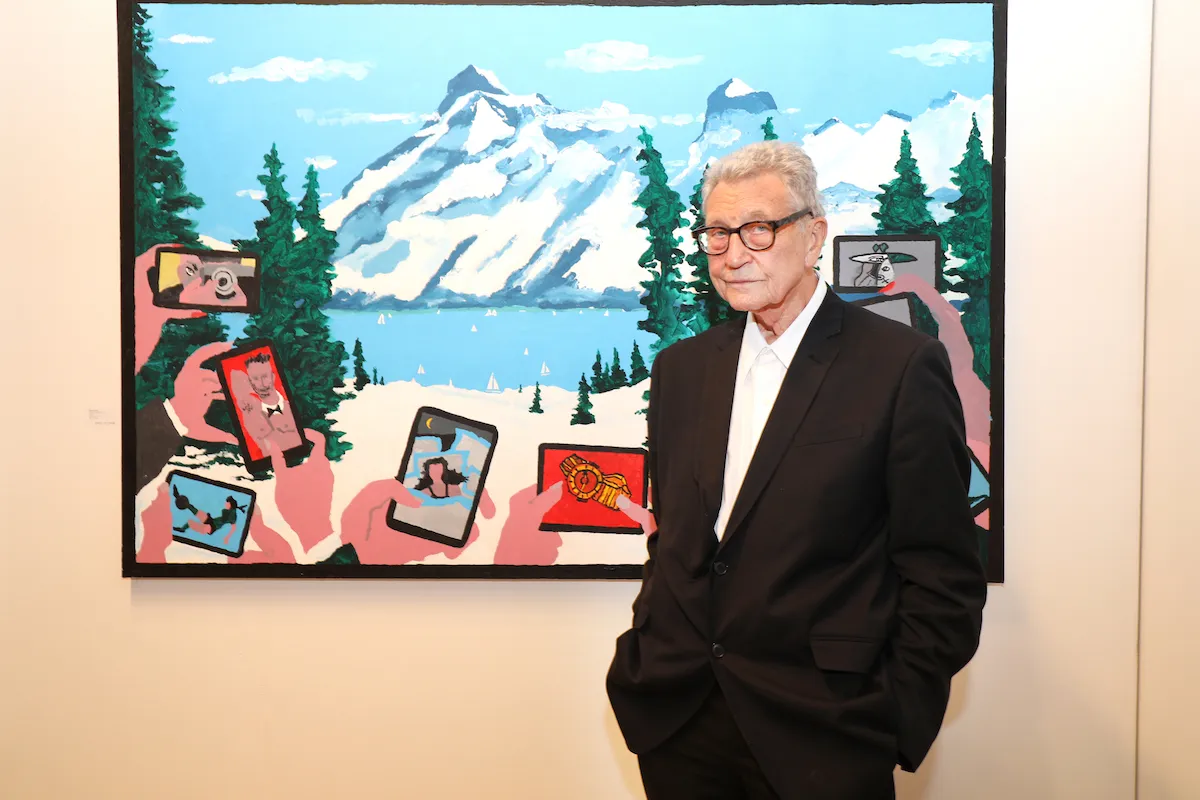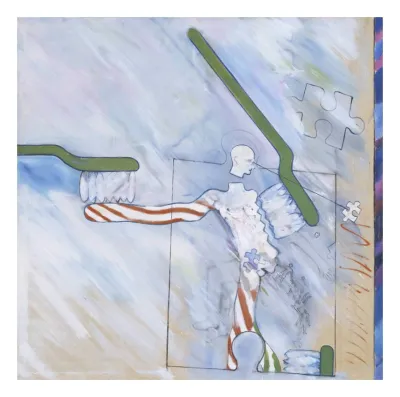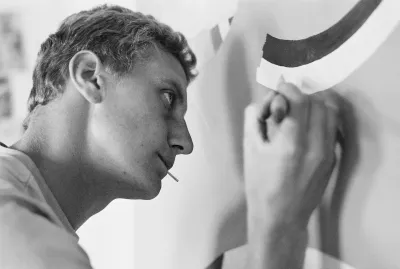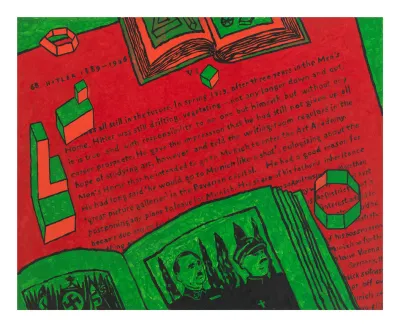
Derek Boshier, a British Pop artist who went on to produce work for a range of musicians, from David Bowie to The Clash, has died at 87. A representative for the artist confirmed his death on Thursday to the PA newswire. A cause of death was not provided.
During the 1960s, Boshier became one of the foremost figures of the Pop movement in England, where, alongside artists such as Pauline Boty and Allen Jones, he envisioned a culture transformed by consumerism. His strange, absorbing paintings from the early part of the 』60s focused on what he called 「Américanisation,」 referring to the flow of distinctly American imagery into England during the postwar era.
England』s Glory (1962), one of his most famous paintings, features the Union Jack beneath matchboxes whose surfaces appear to dissolve into American flags. The painting testifies to the awkward tension between British patriotism and popular American advertising—something that Boshier made literal in the painting』s center, where a scrawled quote from the Vice-Admiral Horatio Nelson is visible alongside a Yogi Bear image used to market Kellogg』s products.
Other works from that era are more ambiguous. The Identi-Kit Man (1962), a piece currently owned by the Tate museum network, displays a man whose body appears to dissemble into jigsaw pieces. His arms mutate into striped appendages that are massaged by oversized toothbrushes. The patterns on his arms notably recall those of the American flag.

Among the general public, Boshier is most famous for the art he produced for musicians. For David Bowie』s 1979 album Lodger, Boshier, working alongside the photographer Duffy, contributed a cover in which the pop star appears to fall through space. And for Bowie』s 1983 LP Let』s Dance, Boshier once again crafted cover art displaying the singer; here, Bowie can be seen alongside an assortment of letters meant to guide a dancer through a predetermined choreography.
For The Clash, Boshier produced the art for the rock band』s Second Songbook. Joe Strummer, the band』s frontman, had reached out to Boshier about the project, and the artist recalled that the précis was simple. Boshier recalled Strummer as saying: 「I』ll send you the lyrics, do what you like, just one thing: include somewhere on the cover the symbol for nuclear waste.」
Derek Boshier was born in Portsmouth in 1937. He went on to study at London』s Royal College of Art between 1959 and 1962, a period when his cohort also included David Hockney, R.B. Kitaj, and others who would come to define the British art scene in the coming years.
Within the US, the country where he would ultimately end up, Boshier has not been so widely recognized as a key figure within the history of Pop. But in England, he is thought of as one of the movement』s core figures. In the eccentric 1962 documentary Pop Goes the Easel, Ken Russell created a portrait of the emergent movement by profiling four artists. One of them was Boshier, who appeared before Russell』s camera alongside Peter Blake and Pauline Boty.

In 1980, Boshier moved to Texas to teach at the University of Houston. He continued to produce oddball art that earned him fame in the local scene. During the 』80s, he painted Klansmen, cowboys, and parodies of the art world, all using thick swaths of paint that owed something to the Neo-Expressionist movement of the day. The pile-up of symbols he added tended to confuse viewers. In a 1985 Artforum review, a befuddled Ed Hill and Suzanne Bloom wrote, 「It is tempting to read this painting in the manner of an astral projection of hermeneutics, but perhaps it is our obsession that insists upon seeing these shards of orbiting culture as slowly turning tropes.」
Boshier moved back to England in 1992, then returned to the US once more in 1997, remaining in Los Angeles for the rest of his career. He continued to produce art, expanding beyond painting, into mediums such as video and installation.
The artist continued to work up until the very end, presenting new paintings as recently as this past spring at Los Angeles』s Night Gallery. His restlessness befit an artist whose motto was 「Art 』Til You Drop.」

